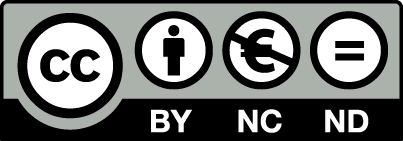CEREBROVASCULAR DISEASES
Introduction. Post-stroke anxiety, depression, and pain are relevant to medical practice, since they represent a significant obstacle to the effective rehabilitation of patients. Information related to post-stroke anxiety and depression is analyzed in the literature, data on the level of central sensitization (CS) which also indicates the presence of comorbid disorders are insufficient. Furthermore, such studies have not been conducted in samples of native speakers of various languages of the Russian Federation until recently due to the lack of diagnostic tools in these languages.
Aim. To compare the levels of СS, anxiety, and depression in patients after ischemic stroke in the early recovery period, using the same instrument in different languages in comparable samples.
Materials and methods. The authors analyzed the level of CS, anxiety, and depression in 4 groups. Study groups: 1) Russian-speaking patients who had suffered ischemic stroke (30 people, early recovery period); 2) Tatar-speaking patients who had suffered ischemic stroke (30 people, early recovery period). Comparison groups: 1) Russian-speaking informants without neurological deficit (30 people); 2) Tatar-speaking informants without neurological deficit (30 people). The Central Sensitization Inventory (CSI, Russian and Tatar versions) and the Hospital Anxiety and Depression Scale (HADS, Russian and Tatar versions) were used to assess the level of CSI, depression, and anxiety.
Results. Analysis of CSI data revealed statistically significant differences between the study and comparison groups in the subclinical CS parameter. Among stroke patients, the subclinical variant of CS is less common than in healthy controls; clinically significant variants predominate. Statistically significant differences were found in HADS anxiety subscale and HADS depression subscale for both the Russian-speaking and Tatar-speaking study and comparison groups.
Conclusion. The data were obtained in samples of native speakers of different languages; the results are comparable, which confirms the universality of the diagnostic scales CSI and HADS for use in the diagnosis of anxiety, depression and CS in post-stroke patients.
PEDIATRICS
Introduction. Specific perinatal pathologies in extremely preterm infants include bronchopulmonary dysplasia, retinopathy of prematurity and periventricular leukomalacia, which can subsequently lead to disability. It is necessary to identify new prognostic markers for the development of these pathologies for a personalized approach to the management of such patients. Aim. To analyze early perinatal outcomes in extremely preterm infants with perinatal lesions of the central nervous system and to establish new predictors of their development.
Materials and methods. An analysis of the frequency of formation of specific perinatal pathology (bronchopulmonary dysplasia (BPD), retinopathy of prematurity (ROP), periventricular leukomalacia (PVL)) was conducted in 66 extremely preterm newborns at the time of discharge from the hospital; Their condition was assessed at birth and during the neonatal period, including an assessment of physical development. Neuromodulin (growth-associated protein 43 (GAP-43)) was measured in the serum on the first day of life.
Results and discussion. Most infants (98.5%) were born in a state of asphyxia and required resuscitation. In the neonatal period, cerebral ischemia and congenital pneumonia were diagnosed in 100% of children. Intraventricular hemorrhage occurred in 27.3% of those examined, anemia in 60.6%, and neonatal jaundice in 48.5% of infants. Infants with BPD and ROP had lower growth rates, more often required invasive mechanical ventilation or longer-term CPAP with elevated oxygen concentrations, and also had longer stays in the intensive care unit. The level of growth protein GAP-43 in the groups of children with BPD and ROP was statistically significantly lower than in children without these outcomes (p = 0.035).
Conclusion. The frequency of specific perinatal pathology in extremely preterm infants by the end of the neonatal period was established: BPD – 15.2%, ROP – 21.2%, PVL – 6.1%. The concentration of GAP-43 was determined for early prediction of the development of these pathologies.
ISSN 2658-5790 (Online)









































